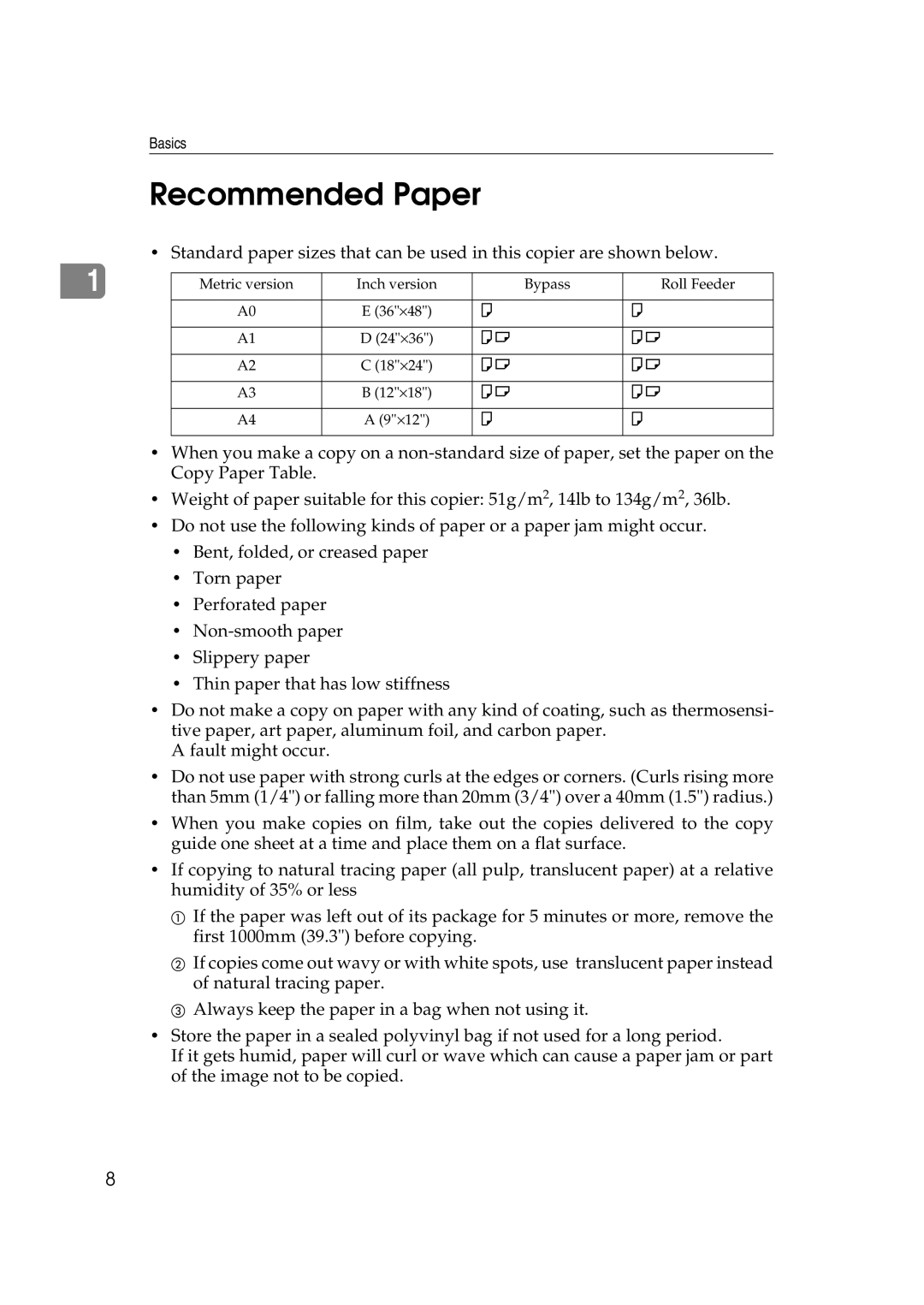
Basics
Recommended Paper
• Standard paper sizes that can be used in this copier are shown below.
|
|
|
|
|
|
1 |
| Metric version | Inch version | Bypass | Roll Feeder |
|
|
|
|
|
|
|
| A0 | E (36"⋅ 48") | K | K |
|
|
|
|
|
|
|
| A1 | D (24"⋅ 36") | KL | KL |
|
|
|
|
|
|
|
| A2 | C (18"⋅ 24") | KL | KL |
|
|
|
|
|
|
|
| A3 | B (12"⋅ 18") | KL | KL |
|
|
|
|
|
|
|
| A4 | A (9"⋅ 12") | K | K |
|
|
|
|
|
|
•When you make a copy on a
•Weight of paper suitable for this copier: 51g/m2, 14lb to 134g/m2, 36lb.
•Do not use the following kinds of paper or a paper jam might occur.
•Bent, folded, or creased paper
•Torn paper
•Perforated paper
•
•Slippery paper
•Thin paper that has low stiffness
•Do not make a copy on paper with any kind of coating, such as thermosensi- tive paper, art paper, aluminum foil, and carbon paper.
A fault might occur.
•Do not use paper with strong curls at the edges or corners. (Curls rising more than 5mm (1/4") or falling more than 20mm (3/4") over a 40mm (1.5") radius.)
•When you make copies on film, take out the copies delivered to the copy guide one sheet at a time and place them on a flat surface.
•If copying to natural tracing paper (all pulp, translucent paper) at a relative humidity of 35% or less
A If the paper was left out of its package for 5 minutes or more, remove the first 1000mm (39.3") before copying.
B If copies come out wavy or with white spots, use translucent paper instead of natural tracing paper.
C Always keep the paper in a bag when not using it.
•Store the paper in a sealed polyvinyl bag if not used for a long period.
If it gets humid, paper will curl or wave which can cause a paper jam or part of the image not to be copied.
8
